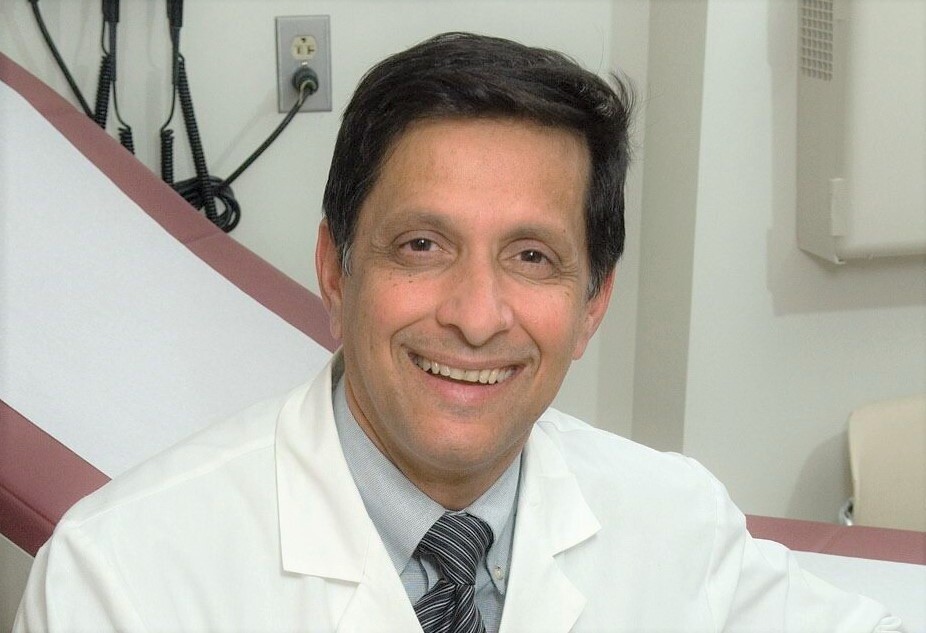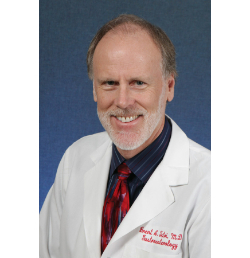
Fundamentals of Liver Disease- Non-Alcoholic Fatty Liver Disease & Non-Alcoholic Steatohepatitis
- Registration Closed
The Non-Alcoholic Fatty Liver Disease & Non-Alcoholic Steatohepatitis unit of the Fundamentals of Liver Disease currently does not offer CME, CE or MOC. This unit is available for viewing purposes only. A newly updated version will be available soon for credits or points. Check back for updates!
There is currently an anticipated shortage of trained providers capable of diagnosing and treating different liver diseases. As a result of this increased demand and limited specialists in the field, more and more front line providers are faced with these patients and do not have the experience or resources that will allow them to manage them appropriately.
The overall goal is to improve patient care by increasing learner competence and confidence in both proper patient identification and assessment and increasing learner performance in therapeutic options and on-treatment management strategies for patients. Patient outcomes will be improved as a result of the improvements in more providers understanding these key components in the management and care of patients with liver diseases.
Key topic areas:
NAFLD: Diagnosis and Identification of Those at Risk of Disease Progression
Pathogenesis of Non-alcoholic Steatohepatitis
Non-Invasive Determination of Advanced Disease in NAFLD
Lifestyle Interventions: Setting Goals and Recommendations
Comorbidities in NAFLD: Cardiovascular Disease, Sleep Apnea, and Chronic Kidney Disease
Bariatric Surgery: Is the Cure for NASH in the OR?
Managing NASH Cirrhosis and Assessment for Liver Transplant
Current Pharmacological Treatment Options for Non-Alcoholic Steatohepatitis (NASH)
Emerging Treatments for Non-Alcoholic Steatohepatitis
COMPONENTS
Online presentations comprised of PowerPoint slides and accompanying audio and online pre- and post-tests and evaluations:
-9 online interactive, narrated modules 15 to 20 minutes in length
-Pre- and post-test questions for each module
Method of Participation
Each learner will listen to each audio self-directed module while following along with the visual slides. Upon completion, each learner will answer evaluation questions and pass a post-test with at least a score of 70% to receive their certificate.
Original release date: May 4, 2017
Expiration date: May 3, 2019
Time to complete each module: 15-20 minutes
Copyright:
All faculty in this activity have given their permission for publication OR
©2017 AASLD
Contact Information
For questions on CE credit for this activity, email Certificate@AmedcoEmail.com
For questions on MOC/CME/CE content or the activity web site, contact education@aasld.org

Mary E. McCarthy Rinella
Mary E. Rinella, MD is a Professor of Medicine at Northwestern University Feinberg School of Medicine and is the Director of the Northwestern Fatty Liver Program. She received her medical degree from the University of Illinois. She completed her residency training in Internal Medicine at the University of Chicago and her fellowship in Gatroenterology and Hepatology at Northwestern University, where she remains on faculty. She studied basic mechanisms of steatohepatitis with the support of the American Gastroenterological Association and the National Institute of Health for 10 years. Currently her focus is in clinical research in the area of non-alcoholic fatty liver disease/NASH both before and after liver transplantation. Her primary clinical focus within the NASH realm is on the associations between NASH and other metabolic co-morbidities, emerging NASH therapeutics and the recurrence of NASH after liver transplantation. She established a multicenter consortium to study the risk factors for liver disease recurrence and outcomes of patients transplanted for NASH cirrhosis (NailNASH Consortium). Dr. Rinella is actively involved in the American Association for the Study of Liver Diseases where she currently serves as Councilor-at-large on the Governing Board. She has held several national leadership roles in the field of NAFLD including Chair of the AASLD NAFLD Special Interest Group (SIG) and most recently as Chair of the AASLD NASH Task Force. As Chair of the NASH Task Force, she is charged with fostering research collaboration and advancing best practice through collaboration with other medical societies, federal agencies and patient advocacy organizations.

Arun J. Sanyal
Arun J. Sanyal, MD, FAASLD is a Professor of Medicine, Physiology and Molecular Pathology in the Division of Gastroenterology at Virginia Commonwealth University (VCU) Medical Center in Richmond, Virginia. Dr. Sanyal also serves as Chairman of the NIH NASH Clinical Research Network, the NIMBLE consortium and the Liver Forum for NASH and fibrosis. His research interests include all aspects of NAFLD and NASH as well as complications of end stage liver disease. He has served as a member of numerous advisory boards to pharmaceutical companies and the liver center at Yale University. He chaired the hepatobiliary pathophysiology study section of the NIH and was a founding member of the Hepatology committee of the American Board of Internal Medicine. He has also served as Secretary as well as President of the American Association for Study of Liver Diseases.
Dr. Sanyal has authored more than 350 articles in such publications as Cell Metabolism, Nature Medicine, New England Journal of Medicine, Lancet, Gastroenterology, Hepatology, and the Journal of Infectious Diseases and has a H-index of 102. He has been continuously funded by the NIH since 1995 and is the principal investigator of four active NIH grants. He is the recipient of the Distinguished Mentorship Award from the American Gastroenterological Association and the Distinguished Scientific Achievement Award from the American Liver Foundation in 2017 and the Distinguished Achievement Award from the AASLD in 2018.

Leon A. Adams

Brent A. Tetri
Brent Neuschwander-Tetri, MD is a Professor of Internal Medicine and Associate Chair for Clinical Research at Saint Louis University. Dr. Neuschwander-Tetri completed his undergraduate studies at the University of Oregon received his MD from Yale University. He completed his internship and residency in internal medicine at the University of Wisconsin Madison and his fellowship in gastroenterology and hepatology at the University of California San Francisco, working in the UCSF Liver Center Laboratory. In 1991, Dr. Neuschwander-Tetri joined Dr. Bruce Bacon and the faculty at Saint Louis University in the Division of Gastroenterology and Hepatology. He is actively involved in clinical care of patients with liver disease, laboratory research and clinical trials. His laboratory work demonstrated severe NASH in mice fed trans-fats and he continues to explore mechanisms of lipotoxic liver injury and fibrogenesis. He is a member of the NIH-supported NASH Clinical Research Network, the group that conducted the PIVENS and FLINT treatment trials for NASH, and is a steering committee member of the international TARGET NASH consortium. He speaks nationally and internationally to academic and industry groups on the molecular pathogenesis of NASH and targets of therapy that address substrate-overload lipotoxic liver injury.

Kathleen E. Corey
Kathleen E. Corey, MD, MPH, MMSc is the Director of the MGH Non-Alcoholic Fatty Liver Disease (NAFLD) Clinic, Associate Program Director for the Medicine Residency for Clinical and Translational Research, a hepatologist who specializes in NAFLD, Physician Investigator in the CTEU, and an Assistant Professor of Medicine at HMS.
Dr. Corey’s interests include clinical and translational research in NAFLD. She aims to better understand predictors of development and progression of NAFLD, the interplay between cardiovascular disease and NAFLD and the natural history of NAFLD in persons living with HIV (PLWH). She is the Co-PI for an R01 evaluating the role of tesamorelin, a growth hormone-releasing hormone for the treatment of NAFLD and is involved in an NIH-funded study on the prevalence, risk factors and treatment of NAFLD in PLWH.
Dr. Corey earned her MD at Duke University School of Medicine, her MPH from the University of North Carolina and her MMSc from Harvard Medical School. Prior to joining the faculty of MGH, she completed her training in Internal Medicine, Chief Residency, Gastroenterology and Advanced Hepatology and Liver Transplant at MGH.

Phiippe Mathurin

Kymberly Watt

Dawn M. Torres

Stephen A. Harrison
Stephen A. Harrison, MD, FAASLD earned his medical degree from the University of Mississippi School of Medicine. He completed his internal medicine residency and gastroenterology fellowship at Brooke Army Medical Center and a 4th year advanced liver disease fellowship at Saint Louis University. He is board certified in both Internal Medicine and Gastroenterology. Dr. Harrison is currently a Visiting Professor of Hepatology at the Radcliffe Department of Medicine, University of Oxford. He is internationally known for studies in hepatitis C and non-alcoholic fatty liver disease with over 200 peer reviewed publications in these fields. Currently, Dr. Harrison serves as the Medical Director for Pinnacle Clinical Research and the President of Summit Clinical Research.
Key:
Learning Objective:
• Identify patients with liver disease, specifically NASH/NAFLD
• Apply diagnostic tests appropriately
• Discuss important counseling
• Recognize treatment/referral priorities
• Identify first line therapies for NASH/NAFLD
• Refer to specialist in a timely and appropriate fashion
This curriculum was developed for Primary Care Providers and any other healthcare provider interested in liver disease.
Satisfactory completion
Participants must pass a post-test with a score of 70% or higher and complete an evaluation to receive a certificate of completion. If you are seeking continuing education credit for a specialty not listed below, it is your responsibility to contact your licensing/certification board to determine course eligibility for your board requirement.
CME
Accreditation Statement
The American Association for the Study of Liver Diseases (AASLD) is accredited by the Accreditation Council for Continuing Medical Education (ACCME) to provide continuing medical education for physicians.
Credit Designation
AASLD designates this enduring activity for a maximum of 4.5 AMA PRA Category 1 Credits™. Physicians should claim only the credit commensurate with the extent of their participation in the activity.
Maintenance of Certification
American Board of Internal Medicine (ABIM) MOC Statement
Successful completion of this CME activity, which includes participation in the evaluation component, enables the participant to earn up to 4.5 MOC points in the American Board of Internal Medicine’s (ABIM) Maintenance of Certification (MOC) program. Participants will earn MOC points equivalent to the amount of CME credits claimed for the activity. It is the CME activity provider’s responsibility to submit participant completion information to ACCME for the purpose of granting ABIM MOC credit.
American Board of Pediatrics (ABP) MOC Statement
“Successful completion of this CME activity, which includes participation in the activity, with individual assessments of the participant and feedback to the participant, enables the participant to earn 4.0 MOC points in the American Board of Pediatrics’ (ABP) Maintenance of Certification (MOC) program. It is the CME activity provider’s responsibility to submit participant completion information to ACCME for the purpose of granting ABP MOC credit.”
MOC Points Process
Physicians seeking MOC points must complete the CME evaluation in addition to completing the pre-test(s), viewing all of the presentation(s) and successfully passing the post-test(s) for each module with a score of 70% or better. MOC completions are collected on the 15th of each month and submitted to the ABIM and/or ABP by the last day of the month. Your MOC points will NOT be reported to ABIM and/or ABP until you are completely done with all lectures and the “Final Evaluation & Certificate/Completion Confirmation” step.
Nurses
Amedco is accredited as a provider of continuing nursing education by the American Nurses Credentialing Center's Commission on Accreditation.
This course is co-provided by Amedco and the American Association for the Study of Liver Diseases. Maximum of number of 4.5 hours.
You must complete the pre-test(s), view all of the presentation(s), successfully pass all of the post-test(s) for each module with a score of 70% or better and complete an evaluation to receive a certificate of completion.
DISCLOSURE OF CONFLICTS OF INTEREST
AASLD requires all individuals who are in a position to control the content of an educational activity to disclose all relevant financial relationships with any commercial entity producing, marketing, re-selling, or distributing health care goods or services consumed by, or used on, patients. Disclosures are collected prior to the start of the educational activity. Any potential conflicts of interest that exist are resolved prior to implementation of the activity. All disclosures are made available and communicated to the leaner prior the activity beginning.
The organizers and faculty have reported the following disclosures:
Dr. Mary Rinella
Faculty
Consulting: AbbVie, Fibrogen, NGM Biopharmaceuticals, Novartis, Gilead, Intercept, and Takeda
Editorial Board: Hepatology, Clinical Liver Disease (guest associate editor), Seminars in Liver Disease (associate editor in 2017)
Dr. Arun Sanyal
Faculty
Consulting: Novartis, Merck, BMS, Boehringer Ingelheim, Nitto Denko, Tobira, Intercept, Genfit, Aredelyx, Akarna, Syntlogic, Fractyl, Pfizer, Jannsen, Exalenz, Novo Nordisk, Nordic Bioscience, Lilly
Grant/research support: Intercept, Gilead, Tobira, Novartis, Astra Zeneca, Merck, BMS
Stock Options: Genfit
President of Sanyal Bio
Dr. Leon Adams
Faculty
Patents regarding Hepascore
Employer has a licensing agreement with Quest Diagnostics regarding its commercialization
Dr. Brent Neuschwander-Tetri
Faculty
Consulting: Allergan, Boehringer-Ingelheim, Bristol-Myers Squibb, Conatus, Consynance, Galmed, Janssen, Karos, Medimmune, Nimbus, Novartis, Pfizer, Receptos, Tobira, and Zafgen
Dr. Kathleen Corey
Faculty
Nothing to disclose
Dr. Philippe Mathurin
Faculty
Financial Interests: MSD, Abbvie, Gilead Sciences, Bristol-Myers Squibb, Verlyx, Intercept, Janssen-Cilag, and Bayer Healthcare pharmaceutical companies
Dr. Kymberly Watt
Faculty
Co-investigator for industry studies supported by Conatus, Intercept Pharmaceuticals, and Gilead
Dr. Dawn Torres
Faculty
Nothing to disclose
Dr. Stephen Harrison
Faculty
Financial Relationships: Advisory/Consulting: Gilead, Fibrogen, NGM Biopharm, Nimbus Discovery, Pfizer, Zafgen, Medivation, Intercept, CLDF, Merck, Genfit, Perspectum, Echosens, Madrigal
Speaker’s Bureau: Abbvie, Alexion
Stephanie Graham
AASLD Staff
Nothing to disclose
Claudia Ventura
AASLD Staff
Nothing to disclose
The opinions expressed in the educational activity are those of the faculty and do not necessarily represent the views of AASLD. Please refer to the official prescribing information for each product for discussion of approved indications, contraindications, and warnings.
DISCLAIMER
Participants have an implied responsibility to use the newly acquired information to enhance patient outcomes and their own professional development. The information presented in this activity is not meant to serve as a guideline for patient management. Any procedures, medications, or other courses of diagnosis or treatment discussed or suggested in this activity should not be used by clinicians without evaluation of their patients' conditions and possible contraindications on dangers in use, review of any applicable manufacturer's product information, and comparison with recommendations of other authorities.
Acknowledgement of Commercial Support:
No commercial support was received for this enduring material activity.

